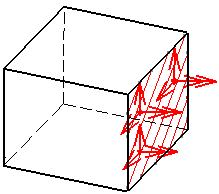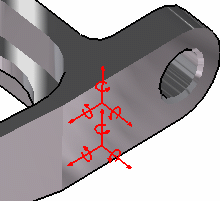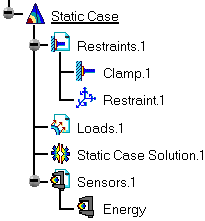Creating Advanced Restraints
| Advanced Restraints
are
generic restraints allowing you to fix any combination of available nodal
degrees of freedom on arbitrary geometries. There are three translation
degrees of freedom per node
for continuum element meshes, and three translation
and three rotation degrees of freedom per node for structural element meshes.
(this is an example)
Make sure you fixed all the global degrees of freedom of your assembly, otherwise a global singularity will be detected at the time of the Static Computation (such a model is unsolvable). To allow you to easily correct the model (Static Analysis Cases only), the singular displacement of the assembly will be simulated and visualized after computation. Advanced Restraint objects belong to Restraint objects sets.
|
|||||||||||||||||
Advanced Restraints can be applied to the following types of Supports:
|
|||||||||||||||||
| This task shows how to create an
Advanced Restraint on a
geometry.
|
|||||||||||||||||
| You can use the sample20.CATAnalysis
document from the samples directory for this task: a Finite Element Model containing a
Static or Frequency Analysis Case. Before You Begin:
|
|||||||||||||||||
| 1. Click the Advanced Restraint icon The Advanced Restraint dialog box is displayed. 2. You can change the identifier of the Advanced Restraint by editing the Name field, if needed. 3. Set the Axis System Type.
The Axis System Type combo list allows you to choose between Global, Implicit and User-defined Axis systems for defining the degrees of freedom directions:
You can select several supports in sequence, to apply the Advanced
Restraint to all
supports simultaneously.
5. Activate the degrees of freedom which are to be fixed in the subsequent analysis. You can fix up to six degrees of freedom per node:
6. Click OK to create the
Advanced Restraint.
|
|||||||||||||||||
|
|||||||||||||||||
| Make sure the computation is finished before starting any of the following operations. | |||||||||||||||||
|
|
Products Available in Analysis Workbench The ELFINI Structural Analysis product offers the following additional features with a right mouse click (key 3):
|
||||||||||||||||
|
|||||||||||||||||




